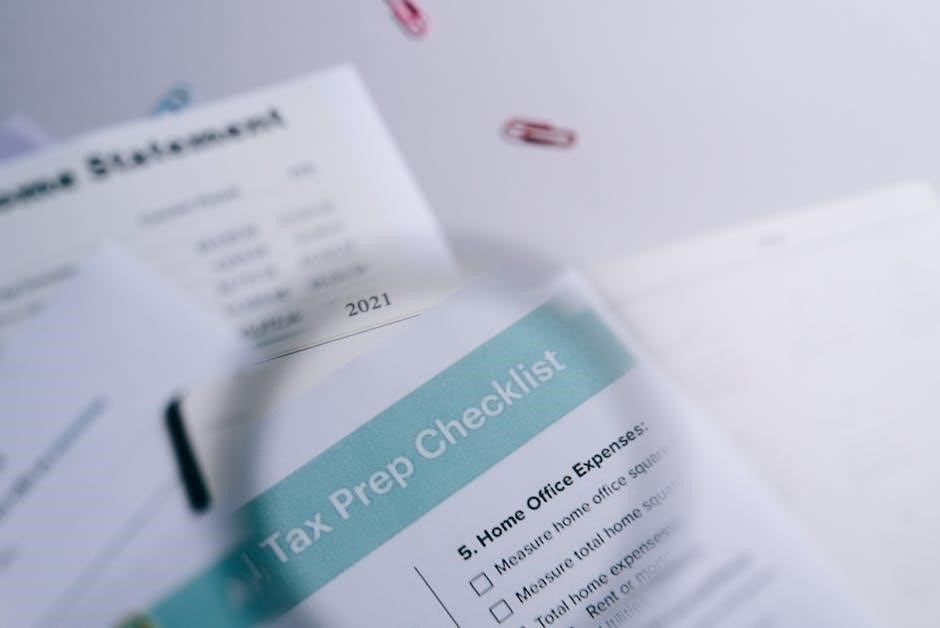Origin and Development of NFPA 101
The Life Safety Code‚ NFPA 101‚ originated in 1913 through the Committee on Safety to Life‚ focusing on exit drills and fire safety. The first edition emphasized safe evacuation procedures‚ laying the groundwork for modern fire protection standards. Over the years‚ the code has evolved to address emerging risks and technologies‚ solidifying its role as a cornerstone of fire safety regulation under the National Fire Protection Association.
1.1 Historical Background of the Life Safety Code
The Life Safety Code traces its origins to 1913‚ when the Committee on Safety to Life was established by the NFPA. Its initial focus was on exit drills and fire safety‚ with the first pamphlet‚ Exit Drills in Factories‚ Schools‚ Department Stores‚ and Theatres‚ published in 1912. This foundational work laid the groundwork for the code’s evolution into a comprehensive guide for fire safety and emergency egress‚ becoming a cornerstone for modern fire protection standards.
1.2 Evolution of NFPA 101 Over the Years
The Life Safety Code‚ NFPA 101‚ has evolved significantly since its inception in 1913. It began with exit drills and expanded to encompass fire suppression systems‚ smoke detection‚ and emergency egress strategies. The 2021 edition introduces updated provisions for high-rise buildings and integrates modern fire safety technologies‚ ensuring enhanced protection for occupants in various occupancies.
1.3 Role of the National Fire Protection Association (NFPA)
The National Fire Protection Association (NFPA) plays a pivotal role in developing and updating the Life Safety Code‚ ensuring it remains comprehensive and adaptable to emerging fire safety challenges. The NFPA facilitates consensus-based standards development‚ providing resources and updates to NFPA 101 while promoting public safety and reducing fire risks globally.

Key Updates in the 2021 Edition of NFPA 101
The 2021 edition of NFPA 101 introduces significant updates‚ including enhanced emergency egress provisions‚ revised fire protection requirements‚ and new guidelines for door openings and safety technologies.
2.1 Major Changes from Previous Editions
The 2021 edition of NFPA 101 includes updates to door opening requirements‚ fire suppression systems‚ and smoke detection standards. It also introduces revised provisions for emergency egress‚ inspection frequencies‚ and enhanced safety measures for high-risk occupancies‚ reflecting advancements in technology and lessons from past incidents.
2.2 New Provisions for Emergency Egress and Safety
The 2021 edition introduces enhanced requirements for emergency egress‚ including updated provisions for door locking mechanisms‚ signage‚ and illumination. These changes aim to improve evacuation efficiency and reduce risks during emergencies‚ ensuring safer exit routes and better visibility in critical situations.
2.3 Revisions in Fire Protection and Life Safety Requirements
The 2021 edition includes updates to fire suppression systems‚ smoke detection‚ and alarm technologies. It also strengthens requirements for fire-resistant materials and emergency communication systems. These revisions enhance overall safety by addressing modern fire hazards and improving system reliability for better protection of occupants.

Compliance and Adoption of NFPA 101
The NFPA 101-2021 is widely adopted by states and cities‚ often combined with local amendments. Jurisdictions like Connecticut‚ Texas‚ and Florida have incorporated it into their codes‚ ensuring compliance with enhanced safety standards.
3.1 Jurisdictional Adoption and Local Amendments
Jurisdictions adopt NFPA 101-2021 as their foundation for fire safety codes‚ with local amendments tailored to regional needs. States like Connecticut and Texas incorporate the code while adding specific requirements‚ such as enhanced evacuation procedures or structural modifications‚ ensuring compliance with both national standards and local regulations.
3.2 Legal and Regulatory Framework for Compliance
The NFPA 101-2021 is recognized as a legal standard for fire safety‚ enforceable by local authorities. Compliance is mandated through building codes‚ permits‚ and inspections. Non-compliance can result in penalties‚ emphasizing the importance of adherence to protect public safety and meet regulatory requirements;
3.3 States and Cities That Have Adopted NFPA 101-2021
Several jurisdictions have adopted the NFPA 101-2021 code‚ including Connecticut‚ Delaware‚ Florida‚ Nevada‚ New Hampshire‚ North Dakota‚ Tennessee‚ Texas‚ and West Virginia. These states integrate the code into their local regulations‚ ensuring compliance with updated safety standards.

Key Chapters and Provisions in NFPA 101-2021
The 2021 edition of NFPA 101 includes key chapters such as Chapter 1: Administration‚ Chapter 7: Means of Egress‚ and Chapter 9: Fire Protection Systems‚ providing foundational safety guidelines.
4.1 Chapter 1: Administration
Chapter 1 of NFPA 101-2021 outlines the scope‚ purpose‚ and application of the Life Safety Code‚ establishing enforcement and compliance frameworks. It defines the code’s intent‚ its role as an American National Standard‚ and how it applies to various occupancies‚ ensuring clarity for jurisdictions adopting the code.
4.2 Chapter 7: Means of Egress
Chapter 7 focuses on the design‚ maintenance‚ and operation of exit routes‚ ensuring safe evacuation. It includes requirements for signage‚ illumination‚ and door operation‚ with specific provisions for special locking arrangements when mandated by occupancy chapters‚ enhancing emergency egress efficiency and safety.
4.3 Chapter 9: Fire Protection Systems
Chapter 9 outlines requirements for fire suppression systems‚ smoke detection‚ and alarm systems. It ensures reliable performance of these systems through detailed installation‚ testing‚ and maintenance guidelines‚ critical for safeguarding lives and property in emergency scenarios.

Emergency Egress and Life Safety Requirements
This section emphasizes safe exit routes‚ proper signage‚ and illumination to ensure quick evacuations during emergencies‚ preventing accidents and saving lives in critical situations.
5.1 Design and Construction Requirements for Safe Exits
The code specifies minimum widths for exits‚ clear signage‚ and emergency lighting to ensure quick evacuation. Doors must open in the direction of exit travel‚ with no obstacles impeding access. These requirements are critical for maintaining safe pathways during emergencies.
5.2 Signage and Illumination for Emergency Egress
The code mandates clear exit signs and sufficient illumination to ensure visibility during emergencies. Photoluminescent markers and minimum lighting levels are specified to guide occupants safely. Regular testing and maintenance of these systems are required to ensure reliability in critical situations under NFPA 101-2021.
5.3 Special Provisions for High-Rise Buildings
NFPA 101-2021 includes enhanced requirements for high-rise buildings‚ such as fire suppression systems‚ elevator evacuation systems‚ and stairwell pressurization; These provisions ensure occupant safety in taller structures by addressing unique challenges like evacuation time and smoke movement‚ reflecting modern construction and safety advancements.

Fire Protection Systems in NFPA 101-2021
The 2021 edition emphasizes advanced fire suppression systems‚ smoke detection‚ and alarm systems‚ ensuring comprehensive protection. It also outlines rigorous inspection and maintenance requirements to maintain system reliability and effectiveness.
6.1 Fire Suppression Systems
The 2021 edition of NFPA 101 includes updated requirements for fire suppression systems‚ emphasizing water-based and clean agent systems. It ensures systems are designed for specific hazards‚ with detailed guidelines on installation‚ testing‚ and maintenance to maximize fire containment and protect occupants effectively.
6.2 Smoke Detection and Alarm Systems
The 2021 NFPA 101 updates include enhanced requirements for smoke detection and alarm systems‚ ensuring early fire detection in high-risk areas. New provisions mandate interconnected systems in larger facilities‚ improving evacuation timing and safety. Integration with suppression systems is also emphasized for comprehensive fire safety.
6.3 Inspection and Maintenance Requirements
The 2021 NFPA 101 mandates strict inspection and maintenance schedules for fire protection systems. Annual inspections of fire doors‚ smoke barriers‚ and emergency exits are required‚ along with daily checks of alarm systems. Detailed documentation and compliance with local regulations ensure system reliability and safety.

Economic Impact and Benefits of NFPA 101-2021
The 2021 NFPA 101 enhances safety while balancing economic factors. While initial compliance costs may be high‚ long-term savings from reduced fire-related losses and insurance discounts are significant.
7.1 Cost of Compliance for Building Owners
The initial cost of complying with NFPA 101-2021 can be significant‚ including upgrades to fire suppression systems‚ smoke detection‚ and emergency egress infrastructure. Building owners may also incur expenses for inspections‚ maintenance‚ and potential renovations to meet updated safety standards‚ varying by building type and size.
7.2 Long-Term Benefits of Enhanced Safety Measures
Enhanced safety measures in NFPA 101-2021 reduce the risk of casualties and property damage‚ leading to lower insurance premiums and reduced liability. These upgrades also ensure business continuity and minimize disruption during emergencies‚ providing long-term financial and operational benefits while safeguarding occupants and assets.
7.3 Impact on Property Values and Insurance
Compliance with NFPA 101-2021 enhances property values by ensuring safety and reducing risks. It leads to lower insurance premiums‚ as insurers recognize the enhanced safety measures. This makes properties more attractive to investors and tenants‚ boosting value‚ marketability‚ and long-term appeal.

Accessing the NFPA 101-2021 Document
The NFPA 101-2021 document is available as a PDF and can be purchased through the official NFPA website or authorized online platforms. Free previews and licensing options are also offered.
8.1 Availability of the PDF Version
The NFPA 101-2021 document is available as a downloadable PDF through the official NFPA website and authorized online platforms. This format allows for easy access‚ searching‚ and printing‚ making it a convenient option for professionals needing the full version of the Life Safety Code.
8.2 Online Platforms for Purchase and Download
The NFPA 101-2021 document can be purchased and downloaded directly from the official NFPA website and other authorized online platforms. These platforms offer secure transactions‚ ensuring easy and instant access to the PDF version of the Life Safety Code for professionals and organizations.
8.3 Free Preview and Licensing Options
A free preview of the NFPA 101-2021 document is available online‚ allowing users to review select portions before purchasing; Licensing options enable organizations to access and distribute the code internally‚ ensuring compliance with copyright and usage terms while meeting specific institutional needs.

Future Directions and Emerging Trends
The NFPA 101-2021 sets the stage for future updates‚ integrating new technologies like smart building systems and enhanced data analytics to improve life safety. Global harmonization of fire safety standards is also a growing focus.
9.1 Anticipated Revisions in Future Editions

Future editions of NFPA 101 are expected to integrate new technologies‚ such as smart building systems and advanced data analytics‚ to enhance life safety. Revisions may also focus on global harmonization of fire safety standards and addressing emerging risks like cybersecurity threats in fire protection systems.
9.2 Integration of New Technologies in Life Safety
The integration of new technologies‚ such as smart building systems and IoT devices‚ is transforming life safety practices. Advanced data analytics and real-time monitoring tools enhance emergency response and evacuation planning. These innovations enable more precise risk assessment and improved compliance with NFPA 101 standards‚ ensuring safer environments.
9.3 Global Harmonization of Fire Safety Standards
The NFPA 101-2021 aligns with global fire safety trends‚ promoting harmonization across international standards. Collaboration with organizations like ISO fosters consistency‚ reducing compliance challenges for multinational entities. This alignment enhances safety worldwide while addressing local regulatory needs‚ ensuring a unified approach to fire protection and life safety.
The NFPA 101-2021 serves as a comprehensive guide for life safety‚ emphasizing enhanced fire protection and emergency preparedness. Adherence to its provisions is critical for safeguarding lives and property‚ ensuring compliance with modern safety standards.
10.1 Summary of Key Features of NFPA 101-2021
The NFPA 101-2021 includes comprehensive updates to emergency egress‚ fire protection systems‚ and life safety requirements. It integrates new technologies‚ enhances occupant safety‚ and provides clarity on compliance. The code balances modern safety needs with practical implementation‚ ensuring robust protection for various occupancies and hazards. Adherence is crucial for safeguarding lives and property.
10.2 Importance of Adherence to the Code
Adhering to NFPA 101-2021 ensures compliance with legal and regulatory requirements‚ safeguarding lives and property. It minimizes fire risks‚ enhances emergency preparedness‚ and supports insurance and property value stability. Compliance is essential for maintaining a safe environment and meeting societal expectations for fire safety standards.
10.3 Final Thoughts on the Impact of NFPA 101-2021
The NFPA 101-2021 serves as a foundational document for fire safety‚ significantly reducing risks and casualties. Its adoption enhances public trust in safety measures‚ ensuring buildings are equipped to handle emergencies. Continuous updates reflect evolving challenges‚ making it indispensable for modern fire safety practices and regulations.



